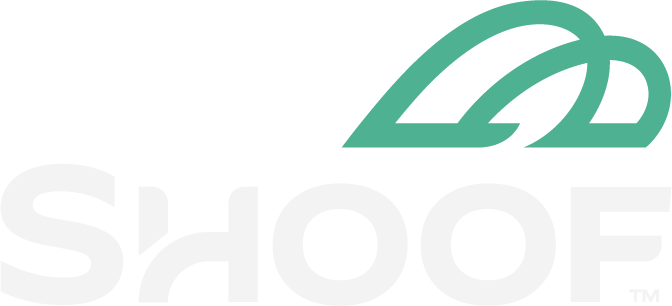Calving season is an extremely busy time of year. It's important to have the gear you need on hand to assist cows in calving – such as obstetric lubricants, calf pullers, and hip clamps, alongside accessories such as ropes, handles and gloves. Make sure you get your Calving Gear sorted early and have a “kit” to take out into the field with everything you might need. Include a notebook so you know what needs replacing. Our recommendations for your calving kit can be found below, and don't forget your wet weather gear, a torch and spare batteries!
Download our full Calving GuideWhat's in a calving kit?
- Bucket with a lid to contain kit
- Metabolics (clearly labelled milk fever treatments and starter drench)
- Calving ropes or chains (remember to clean after each use) & handles
- 2 litre container of lube (a plunger pump is an easy way to dispense lube)
- Towel and soap for cleaning hands
- Notebook and pencil (A pencil will still work in wet conditions unlike a pen)
- Ear tags or other calf identification system (pre numbered tags save time and reduce recording mistakes)
- Spray paint - red plus another colour (red can indicate a warning eg withold milk communicate this with staff)
- Gloves
- Head torch and batteries
- Iodine spray for navels - pre mixed with water (do not use teat dip as an alternative)
- Key contact numbers (Vet, manager on laminated sheet)
- Food/energy bars

Vink calf Puller/Calving Jack
- Worlds best selling calving aid
- One person operation
- The only single-handed calf puller
- Will not slip out of position due to unique rump frame
- Quick release lever feature for immediate tension let off
- Available in two pole lengths – standard 160cm & long 180cm
- Tried and trusted for many years
- More than pays for itself in its lifetime. Best in class
- Energy saving for farmer, cow & calf. Even in a normal calf delivery a pull of 150-250kg is required
- Permits pulling tension in multiple planes; straight, up or towards udder. Pole can also be moved sideways up to 30 degrees
- 10cm stroke allows farmer to synchronize pulls & rests with natural contractions
- Wholly constructed in stainless steel. Trouble-free servicing
- Manufactured in Netherlands

Calf Puller Vink cpt
The best-selling Calving Jack aids in safe and humane calving of cows. Its frame fits over cow's hip bones, maintaining steady support, and its stainless steel structure ensures longevity. Also available in long pole mode. Replacement parts available.
View Product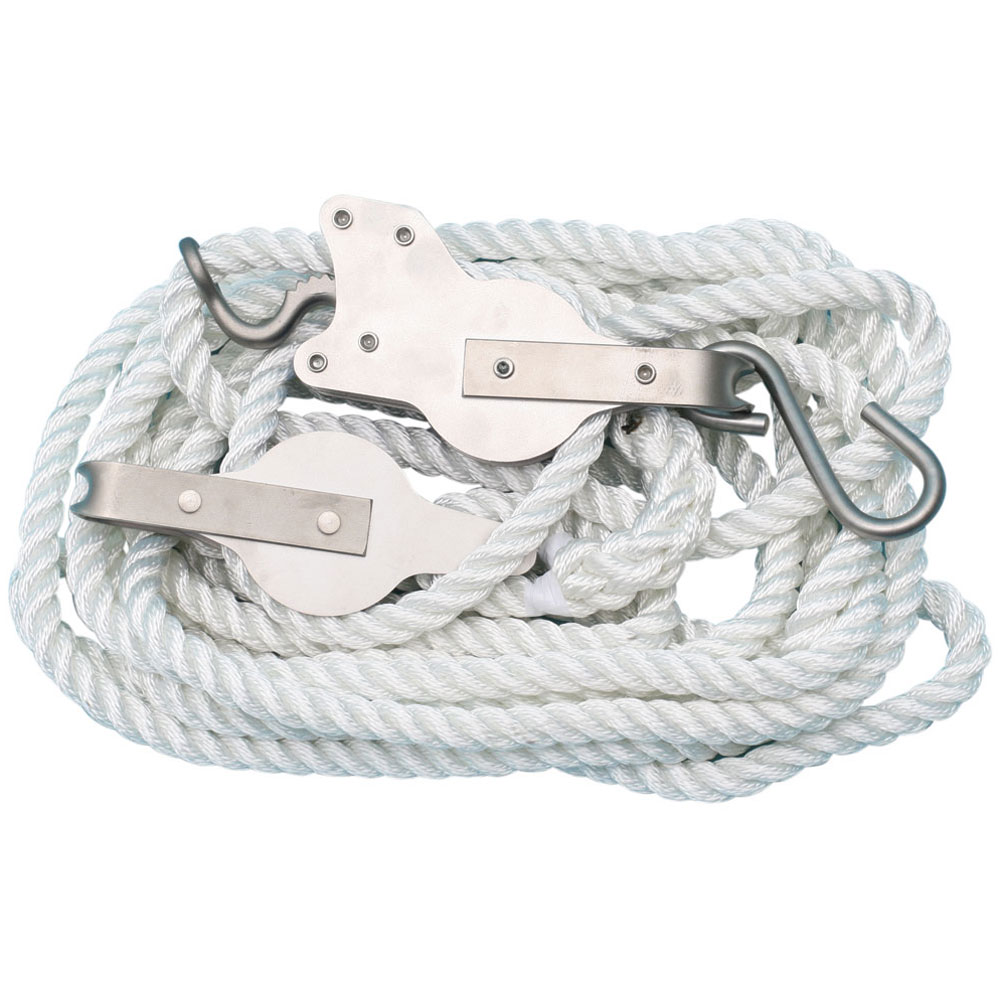
Calf Puller Fast-Lock complete
Shoof Fast-Lock is an all-stainless and nylon 3-pulley system. Popular as a calf puller, it includes calving chains or ropes on the calf's legs, and a rope lock and release mechanism on the double-block. Fast-Lock pulley system comes in a self-draining carry bag & uses 7.2m of 10mm polyrope.
View Product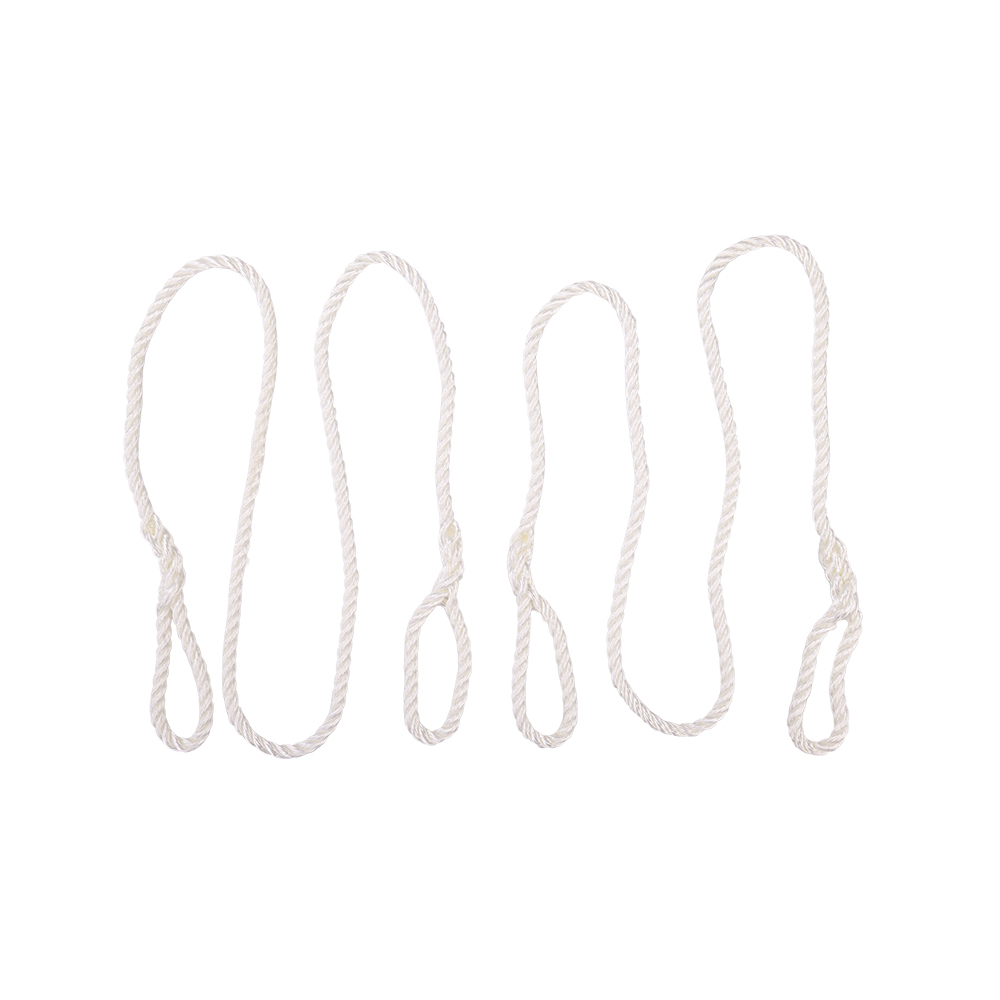
Calving Rope 7mm Double-eye Pair
Discover the best ropes for uncomplicated calving assistance. 1.1m length. Improve your calving process with our ropes today.
View Product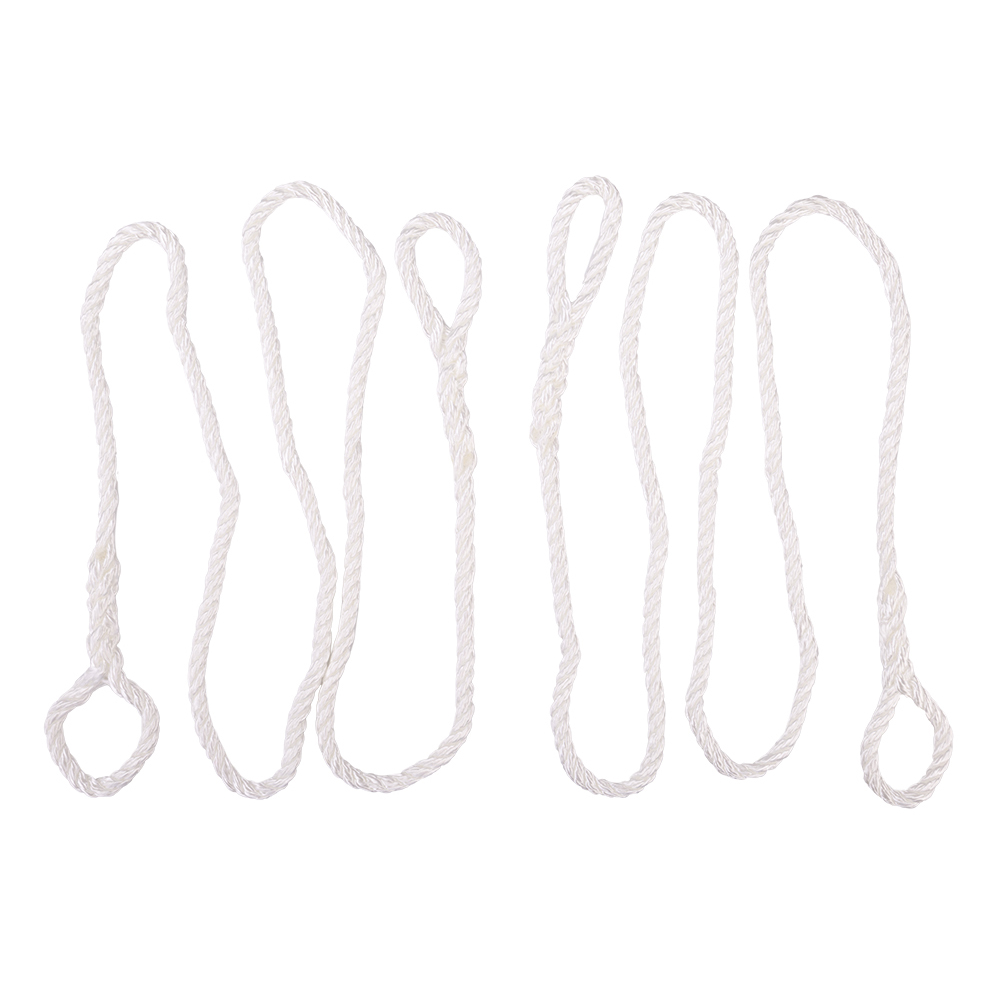
Calving Rope 9mm Double-eye pair
The Calving Rope 9mm Double-eye pair a reliable tool for those in the farming industry
View Product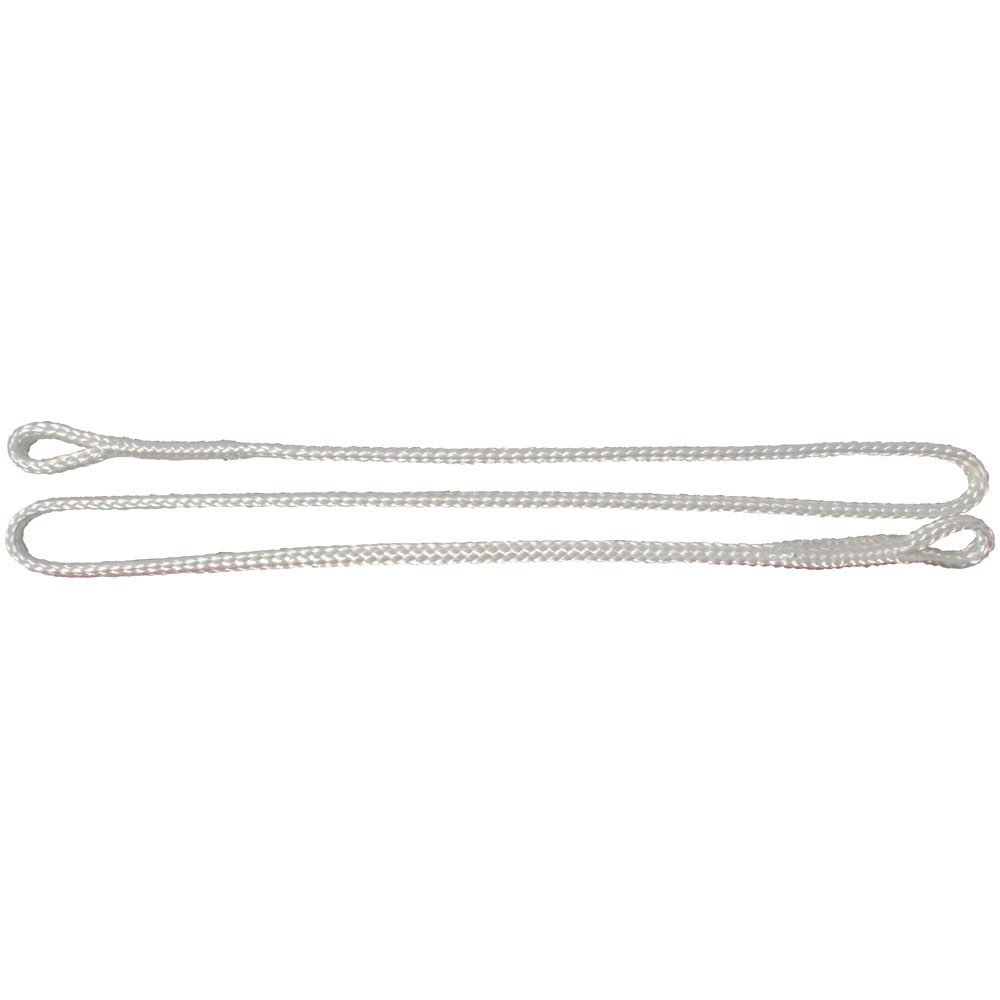
Calving Rope 12mm Flat Braid White each
Soft and coreless flat-braid rope, 12mm wide, 1.8m long. Perfect for single or double use, with color options to ID left/right leg.
View Product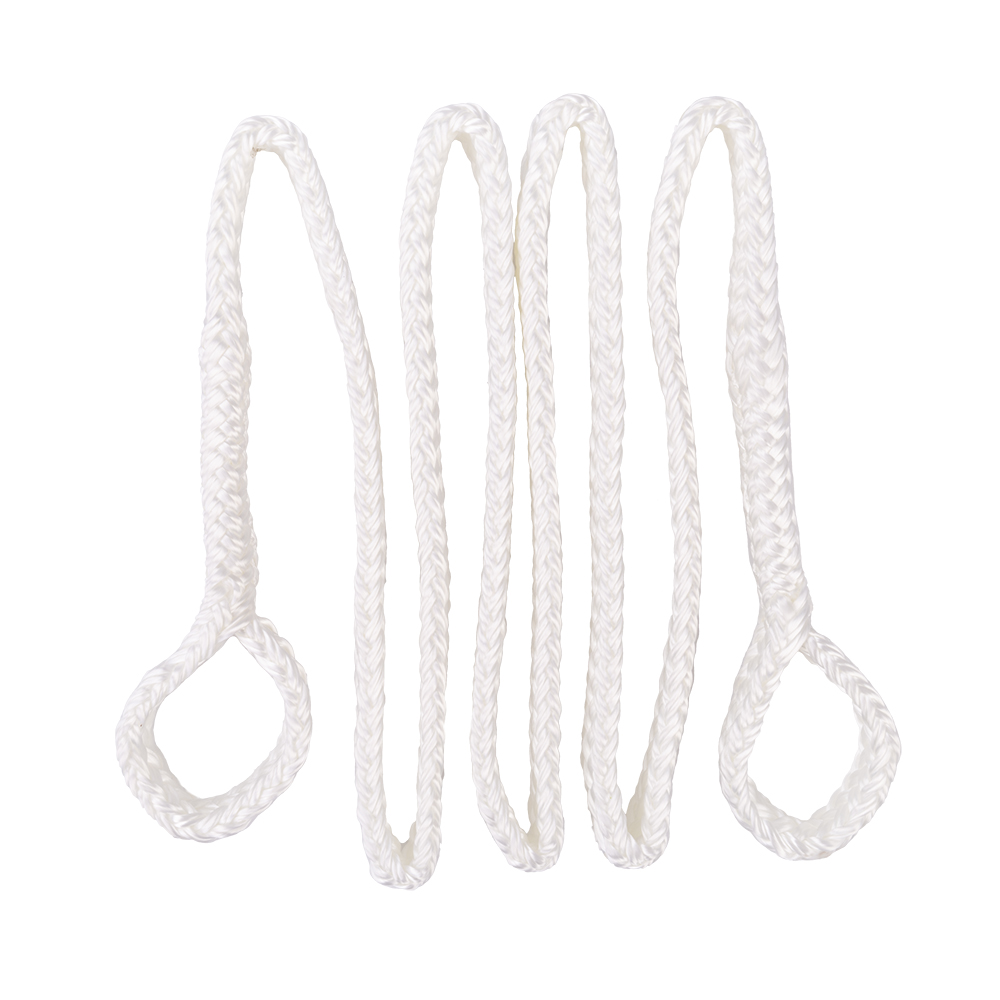
Calving Rope 20mm Flat Braid White each
Soft and coreless flat-braid rope, 12mm wide, 1.8m long. Perfect for single or double use, with color options to ID left/right leg. Heavier than normal calving/foaling ropes.
View Product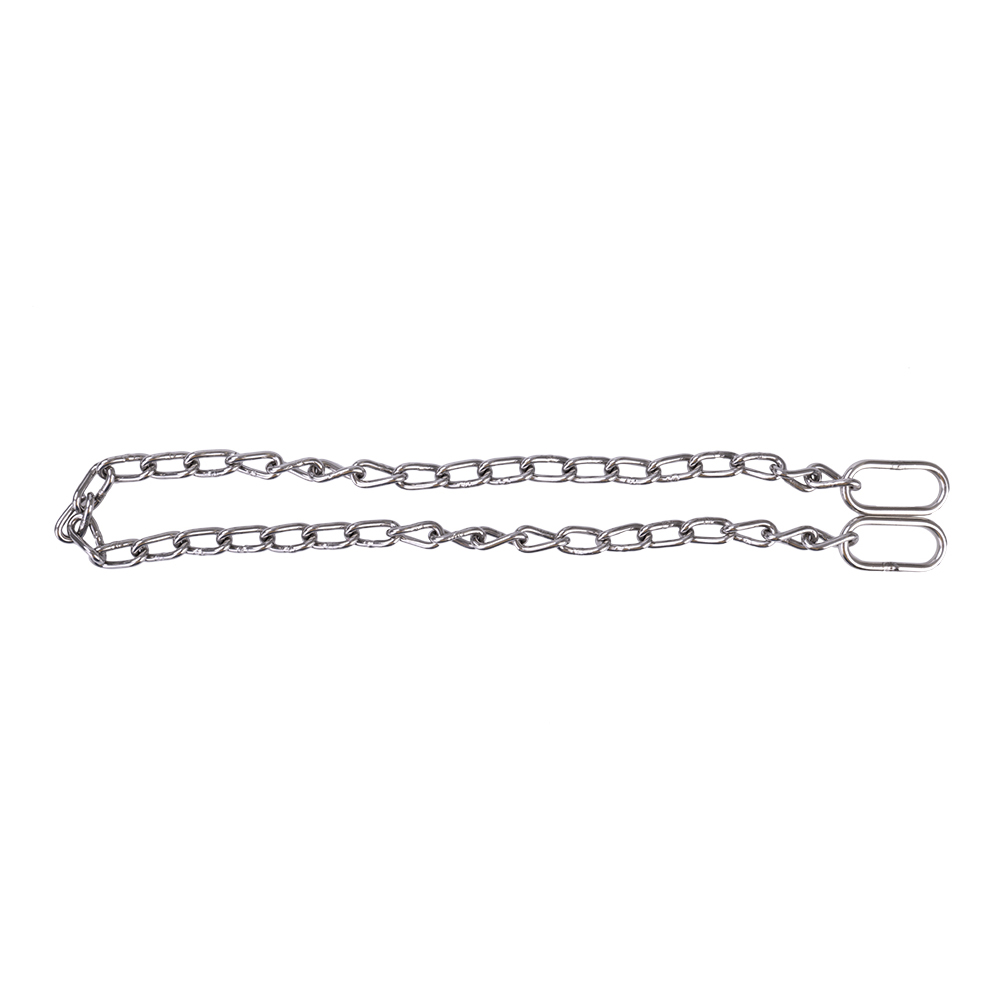
Calving Chain Stainless Steel Short
High-quality stainless steel chains with oval end loops for internal use. Two designs: Short 80cm. Long 150cmwith middle loop-link.
View Product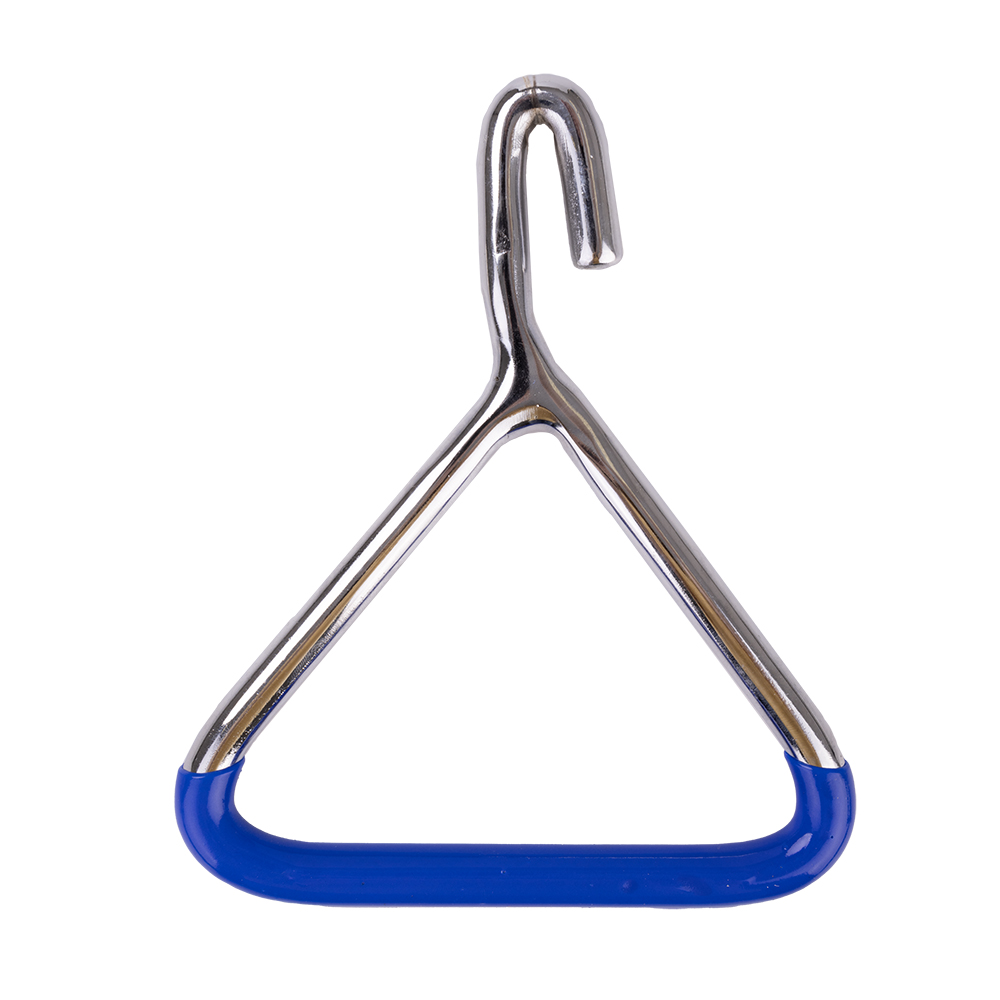
Calving Chain Handle Stainless each
Get a grip with our stainless steel calving chain handle. Improved rubber dip for comfort. Hooks easily for use with ropes & straps. Best used as pair.
View ProductShoof Obstetric Lube & Pressure Pump
- Aides in difficult births, pregnancy ultrasound and obstetric tasks
- Eases the passage for the calf and cow preventing injury
- Allows easier calf manipulation - repositioning or extraction
- Reduces cow stress and serves as a barrier against potential infections
- Viscous, non-irritant, non-toxic, ready to use - no mixing
- Cetrimide stabiliser (not suitable for A.I - see AquaLube)
- Available in 1L, 2L, 5L & 20L sizes – up to 200L drum if required
- Significant price saving compared to competitors
- Compatible with Shoof OB Lube Pressure Pump
- Pressure pump delivers a large volume of lubricant (1L/min)
- Ensures lubricant is delivered exactly where required in birth canal
- Flow rate is consistent and maintains lubrication throughout calving
- Reduces OB lube waste significantly. Shoulder tap allows easy control of flow
- 5L capacity and 2 metre delivery hose
- Designed and manufactured in New Zealand by Shoof

Obstetric Lube Pressure Pump
Designed for controlled and direct delivery of obstetric lubricant to where its required, the lube pump ensures minimal waste and mess. Bottle is pumped prior to use and pump delivers OB lube through 2m long flexible hose, controlled by shoulder valve.
View Product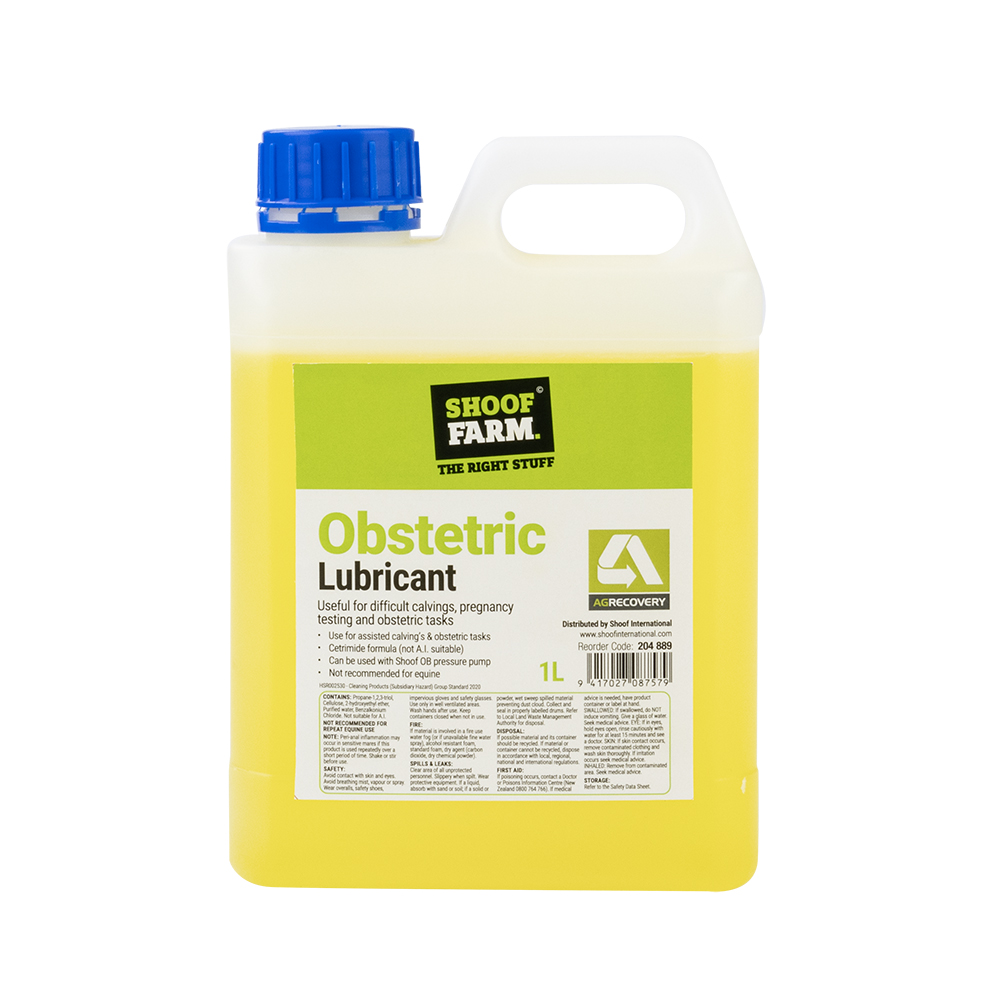
Shoof Obstetric Lubricant
Shoof Farm brand obstetric lubricant, perfect for difficult births and pregnancy diagnosis. Cetrimide formula. Use for assisted calving’s & obstetric tasks
View ProductDown Cow Lifting - best practice
A breast strap under the brisket in conjunction with hip clamps is good practice as it helps the cow up onto her front legs as her hips are raised. The additional support also minimizes discomfort for the cow and provides some additional restraint making the process safer for you and the cow.

Rules for nursing a down cow
- Provide clean, dry and soft bedding, that will provide a non-slip surface when the cow tries to stand
- Provide a continuous supply of clean water and good feed
- Move the cow from side to side every 3 hours to ensure her weight is not always to one side and flex and extend the hind limbs each time the cow is moved
- Regularly hand strip milk from the udder
- Regularly encourage the cow to rise
- Use lifting devices to get her to her feet only, never leave cows hanging in lifting devices
- Regularly re-assess her progress and diagnosis
Hip Clamps - Vink & Kerbl
- Provide clean, dry and soft bedding, that will provide a non-slip surface when the cow tries to stand
- Provide a continuous supply of clean water and good feed
- Move the cow from side to side every 3 hours to ensure her weight is not always to one side and flex and extend the hind limbs each time the cow is moved
- Regularly hand strip milk from the udder
- Regularly encourage the cow to rise
- Use lifting devices to get her to her feet only, never leave cows hanging in lifting devices
- Regularly re-assess her progress and diagnosis
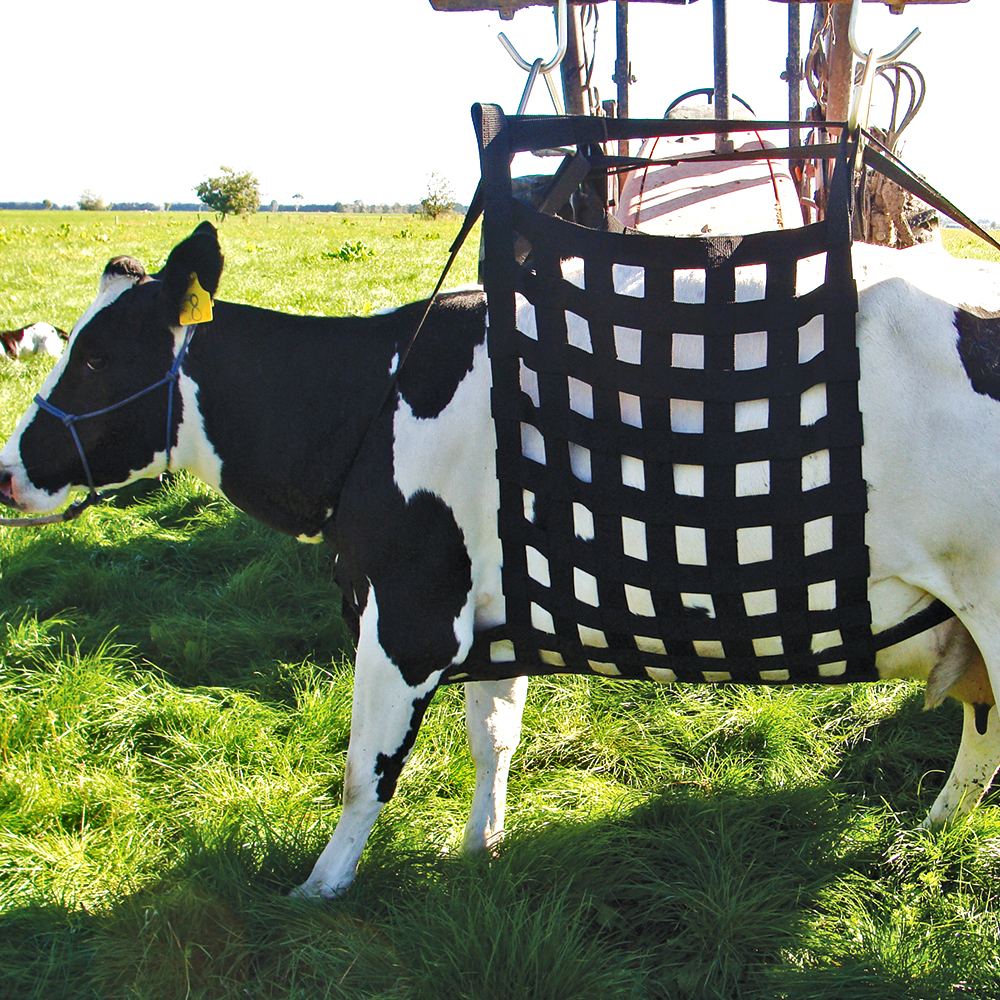
Cow Lifter Liftease
Introducing Liftease, a strong and easy-to-use sling-lift device designed to increase cow comfort and prevent hide damage. Lift up to 2,000kg without risk and use the three lift loops for variation in lift height. Prevent skin ulcers with its enclosed design. Perfect for horses too.
View Product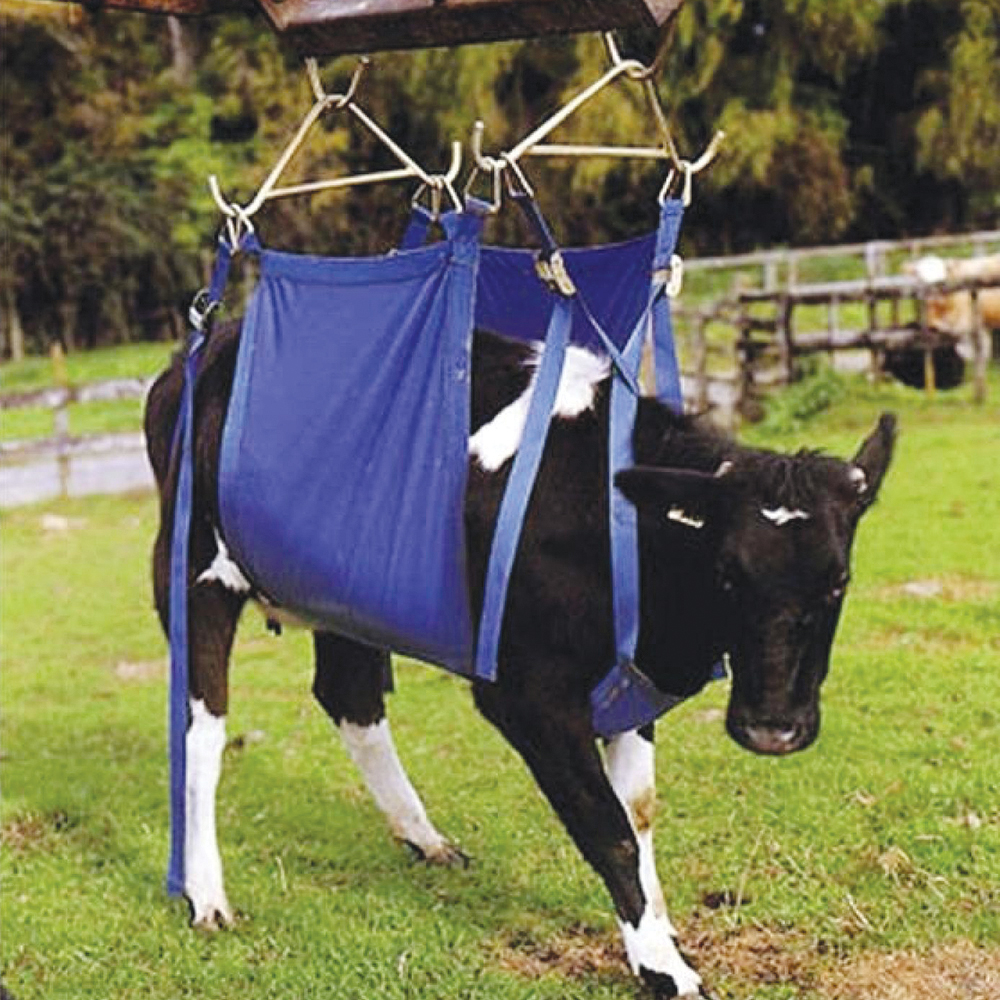
Daisy Lifter
The Daisy-Lifter sling for cow lifting is designed to reduce pressure points and offers support for mediumterm lifting. Fully adjustable for any size animal. Max lift load: 1,000kg. Supplied in handy carry bag.Two sizes available: Standard and X-Large. Replacement gambrel available.
View Product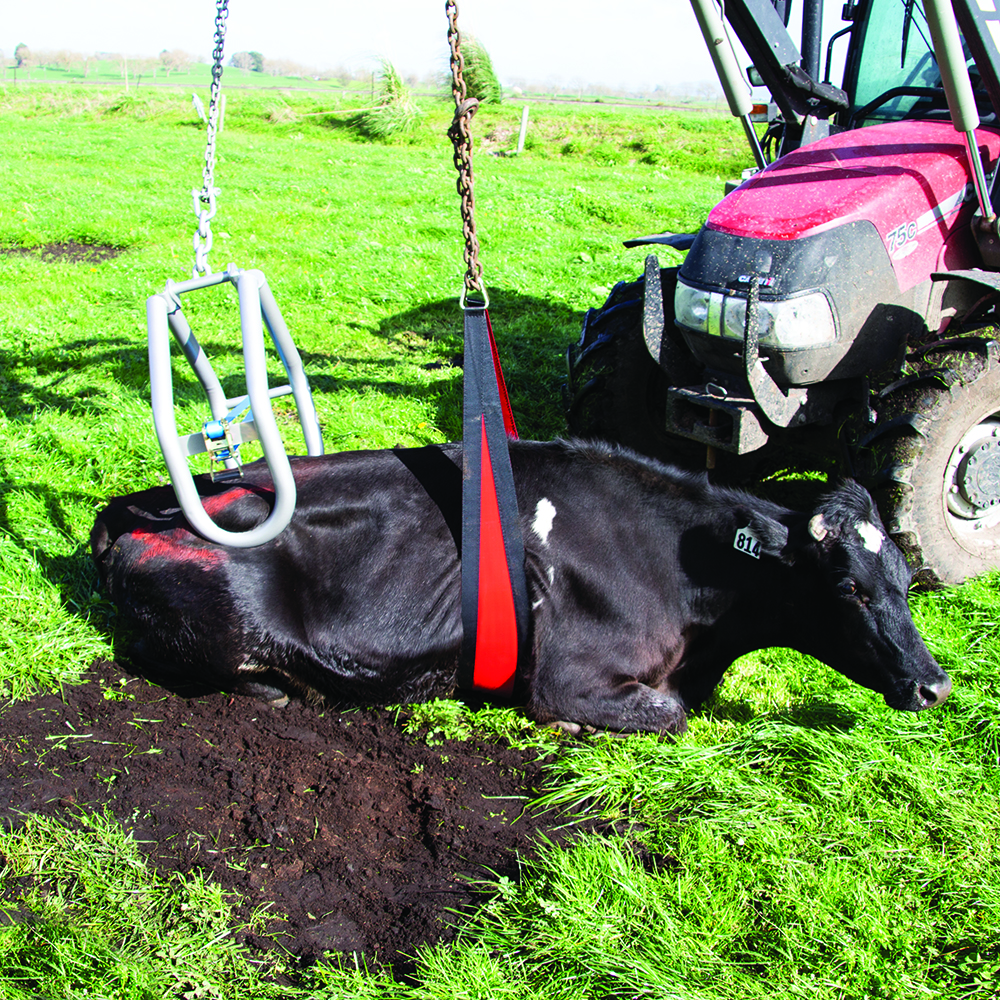
Cow Lifter Belly Strap
The Shoof Belly Strap supports comfortable lifting with its 20cm-wide belly support, perfect for use with a hip clamp device. Practical and efficient at 2.4m ring-to-ring. Recomended by DairyNZ.
View Product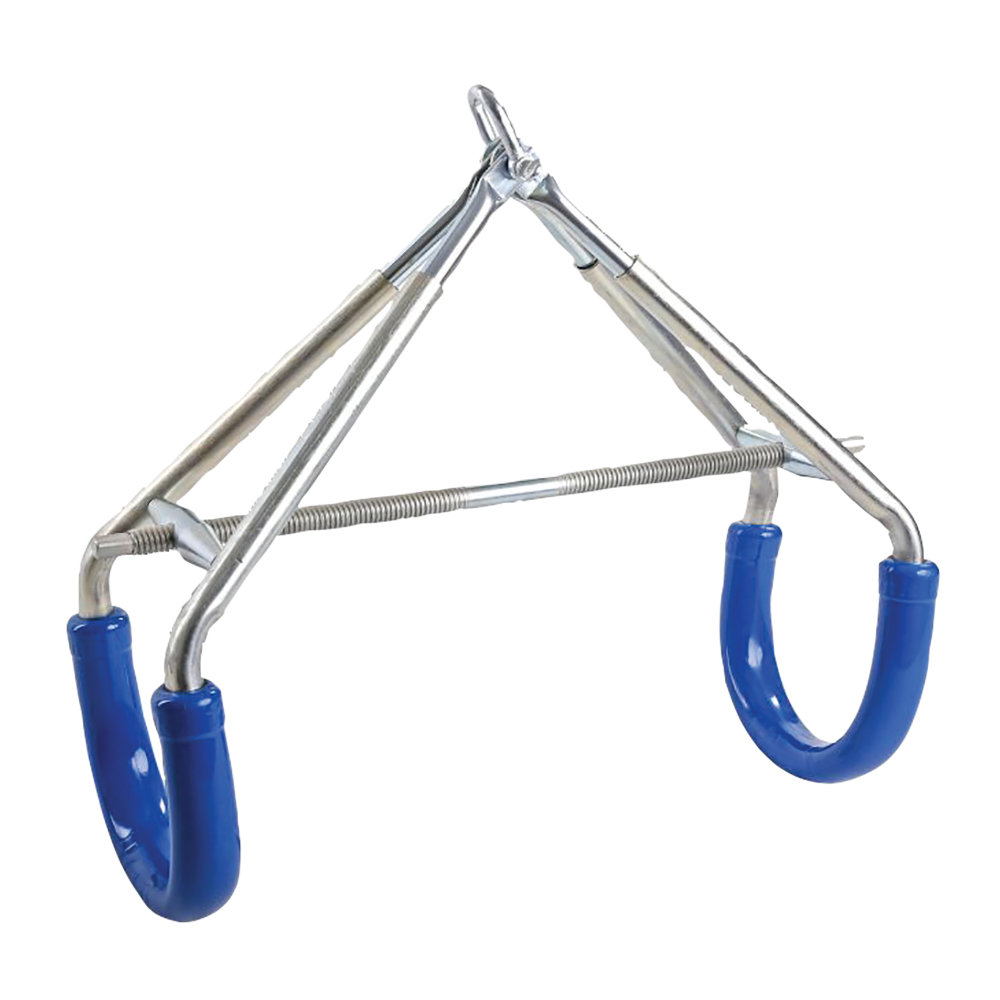
Cow Lifter Hip Clamp Vink
Top-of-the-range hip clamp with double-direction spindle thread for fast closure. Removable handle ensures safety of user and animal, prevents clamp from bending during use. Galvanised finish, made in the Netherlands by Vink-Elst.
View Product
Cow Lifter Hip Clamp Kerbl Standard
Get faster closure and release of down animals with the Kerbl hip clamp. Powder-coated frame, double-direction spindle thread, galvanised mechanical parts, and rotating wood handle.
View ProductCow Rumen Drenching
Transition cows (3 weeks prior and 3 weeks post calving) are at a high risk of a number of metabolic disorders that can affect dairy farm profitability. The significant nutrient requirements for a rapidly growing calf and for the preparation of the udder for lactation often result in dairy cows being in a state of negative nutrient balance. Although many commercial balanced diets can help to minimise the negative nutrient balance, many dairy cows will still benefit from the oral administration of a fresh cow drench immediately after calving.
The classic method was to fill a wine bottle with whatever electrolyte fluid or starter drench that was required and put it down the cow’s throat. Invariably, a third went down her throat, a third went into her lungs and a third went on the ground. For low volume (1-2 litres) you would use a Shoof Easy Drencher or Shoof Big Drencher which is much safer than a glass wine bottle which could break. A lot of the low volume ‘starter drenches’ or ‘jump start’ drenches get supplied in what looks like a plastic wine bottle for this reason. But many farmers and vets also make their own starter drench recipes up and would use these bottles to administer these.
A rumen drench pump on the other hand helps facilitate giving cows large volumes of oral fluids. These pumps have a metal tube (trocar) that goes down the throat and can be clipped onto the nose so the cow can’t spit it out. It’s very safe to use and almost impossible for it to go down the wrong way. The pump is attached to the tube and you can dose the cow in a very short period of time. Twenty litres of liquid might take a minute to administer. These pumps can also be used to help cattle suffering from bloating. Once the tube is in place, the gas is dispelled, and medication can be administered directly to the stomach via the pump.
Twenty litres might sound like a lot but cows stomachs have a capacity for 150 litres so you can see how just 1-2 litres doesn’t really go very far!
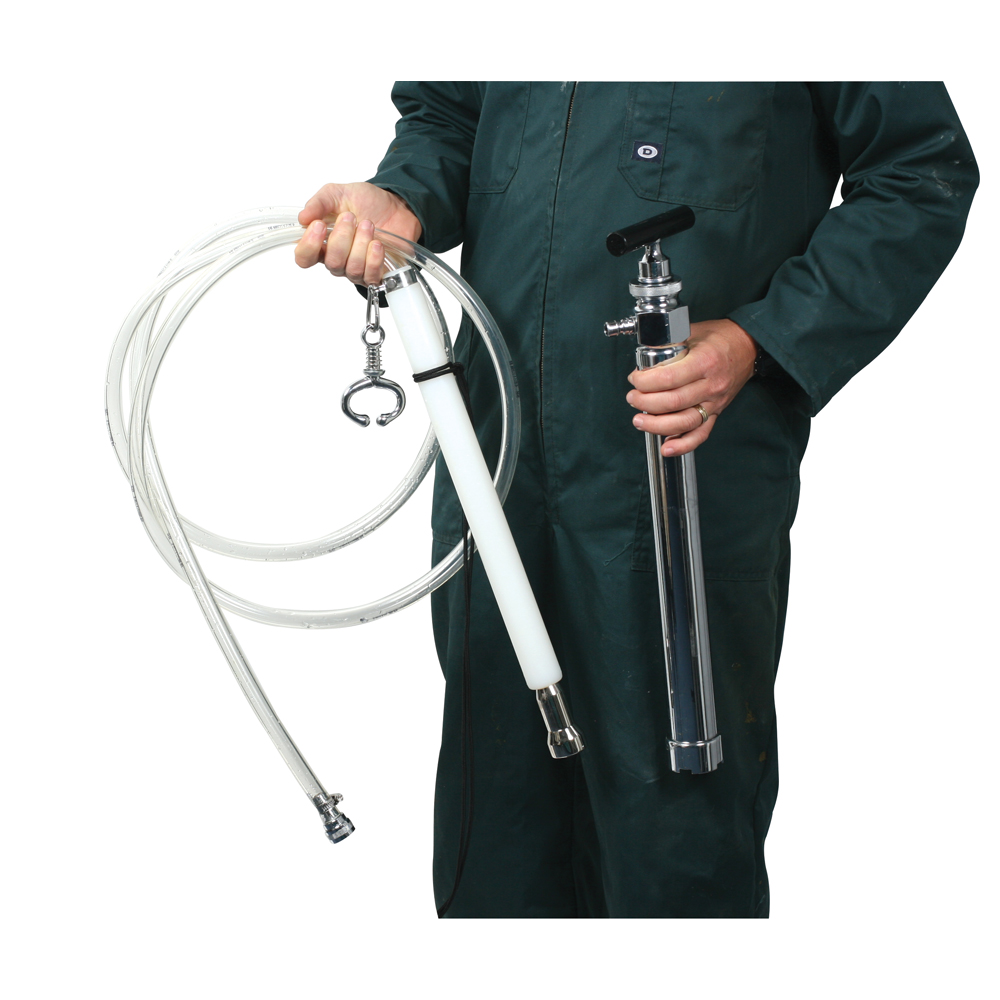
Bovivet Rumen Drenching System
Bovivet rumen-drenching system for large volume cattle drenching. Includes a 600ml chromed-brass pump. The tubing assembly features 3.5m of polyurethane tubing with a smooth surface for cow comfort. The weighted end-caps (supplied) vary in size for young and mature stock. The strong plastic tubular gag has a nose clamp and tie cord for secure attachment to the cow’s nose and jaws.
View Product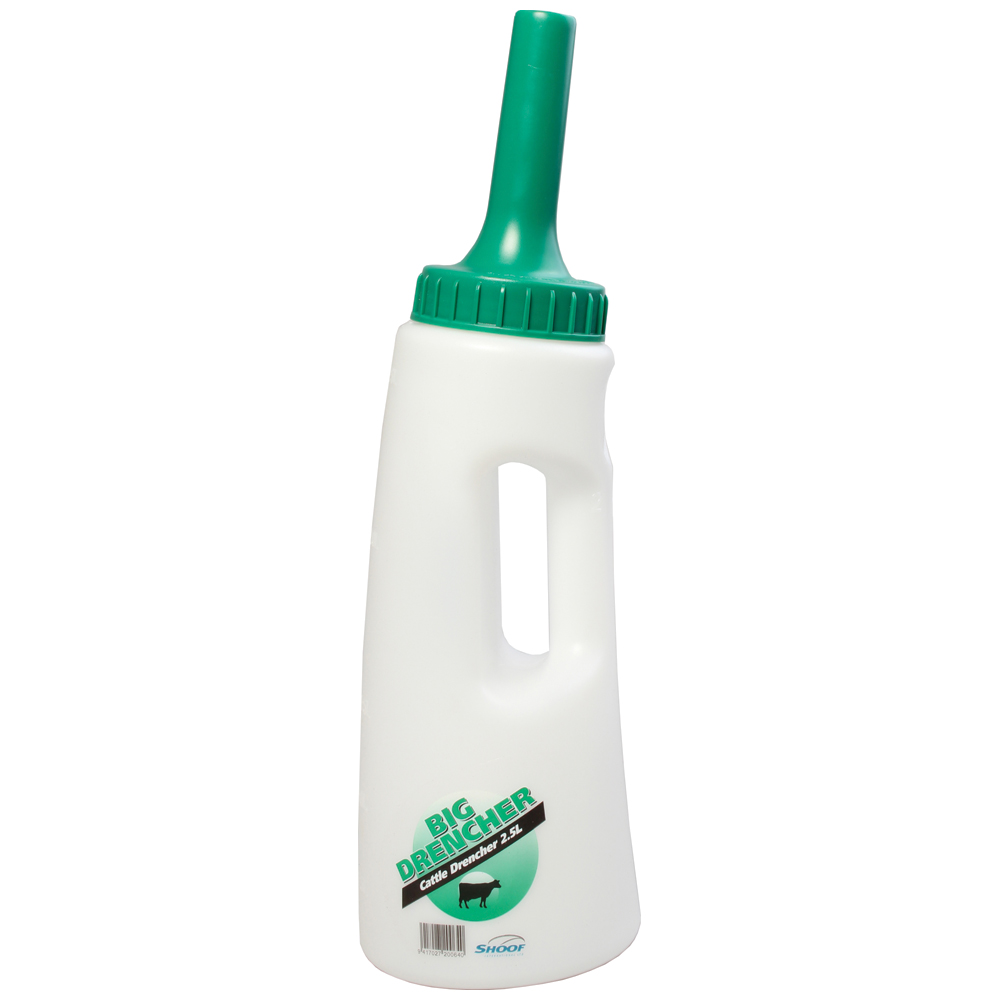
Drench Bottle Big Drencher
Introducing the 2.5L Big Drencher: perfect for volume drenching mature cattle. Ideal for use with Easy Feeder calf feeding bottle, or fits onto Speedy Feeder. Replaceable probe lid.
View Product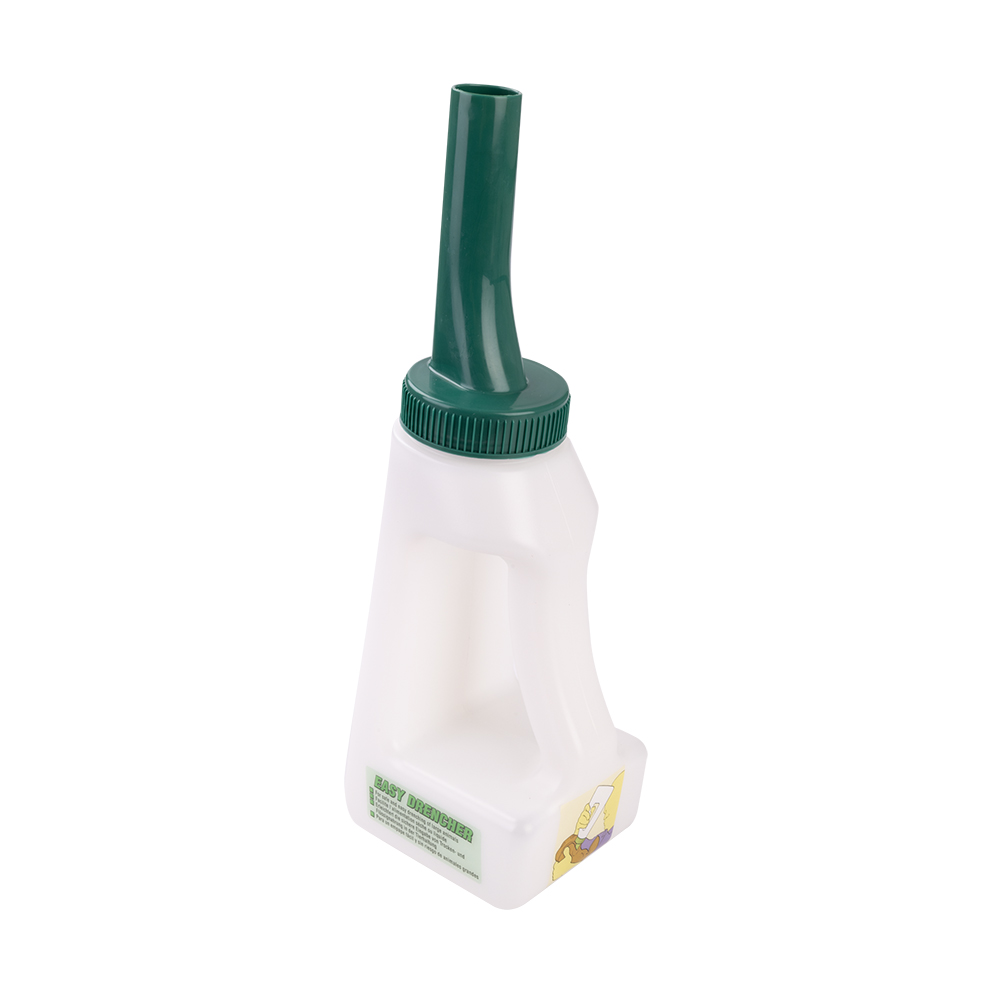
Drench Bottle Easy Drencher
Safe, easy and purpose-designed all-plastic bottle to administer volume drenches to mature stock. Features easy-grip handle, 1.2L capacity, marked in 100ml levels, 12cm-long safe plastic probe, wide 63mm neck opening. Perfect for hassle-free drenching.
View Product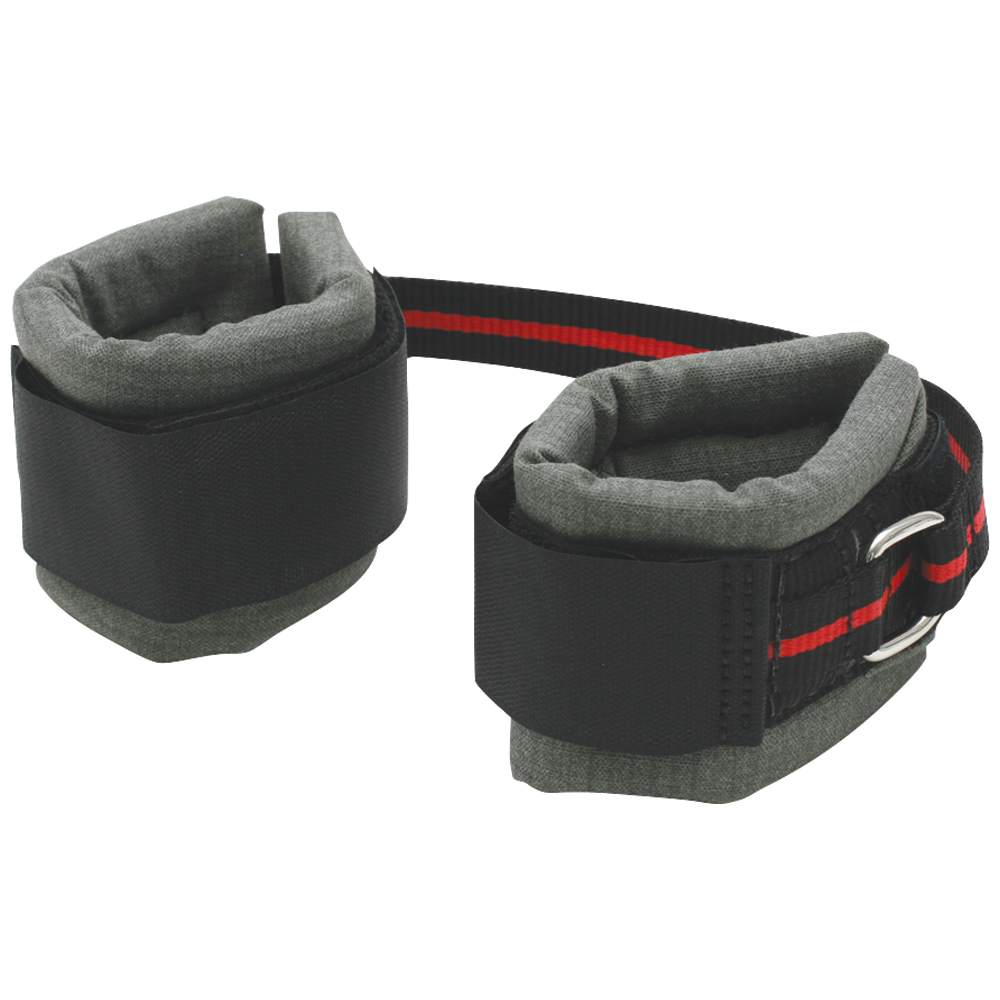
Cow Hobble Welfare Approved
Padded leg bands, double layer fastening, and 35cm leg spacing for comfort and mobility.
View Product
BOS Cow Leg Splint
This product effectively treats calving paralysis and allows for normal mobility. Includes adhesive bandage, three different cow sizes available and can be molded to required shape with heat gun. Reuseable with new bandage.
View Product